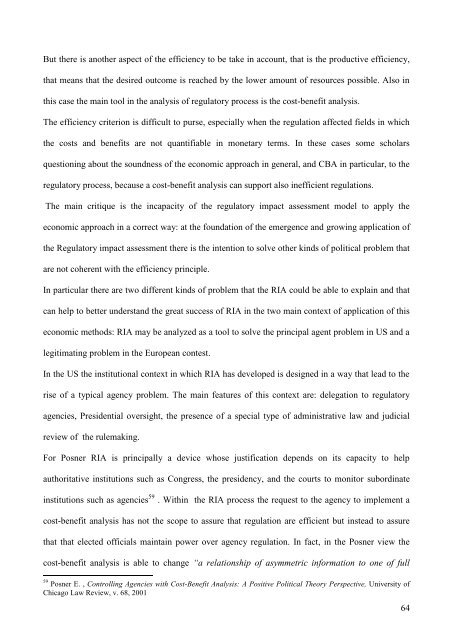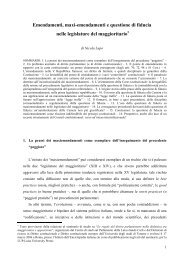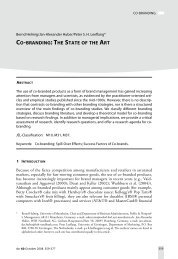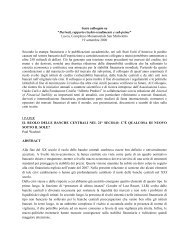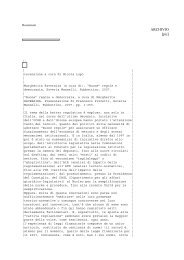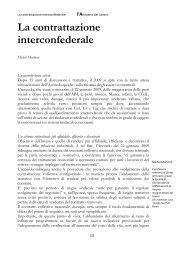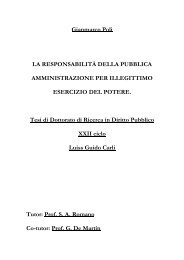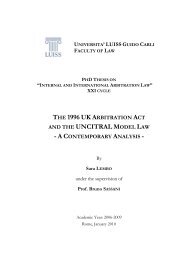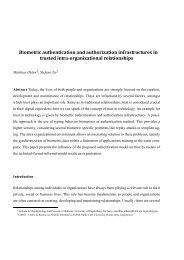The rebates, which consist in granting a lump sum discount to the ...
The rebates, which consist in granting a lump sum discount to the ...
The rebates, which consist in granting a lump sum discount to the ...
Create successful ePaper yourself
Turn your PDF publications into a flip-book with our unique Google optimized e-Paper software.
But <strong>the</strong>re is ano<strong>the</strong>r aspect of <strong>the</strong> efficiency <strong>to</strong> be take <strong>in</strong> account, that is <strong>the</strong> productive efficiency,that means that <strong>the</strong> desired outcome is reached by <strong>the</strong> lower amount of resources possible. Also <strong>in</strong>this case <strong>the</strong> ma<strong>in</strong> <strong>to</strong>ol <strong>in</strong> <strong>the</strong> analysis of regula<strong>to</strong>ry process is <strong>the</strong> cost-benefit analysis.<strong>The</strong> efficiency criterion is difficult <strong>to</strong> purse, especially when <strong>the</strong> regulation affected fields <strong>in</strong> <strong>which</strong><strong>the</strong> costs and benefits are not quantifiable <strong>in</strong> monetary terms. In <strong>the</strong>se cases some scholarsquestion<strong>in</strong>g about <strong>the</strong> soundness of <strong>the</strong> economic approach <strong>in</strong> general, and CBA <strong>in</strong> particular, <strong>to</strong> <strong>the</strong>regula<strong>to</strong>ry process, because a cost-benefit analysis can support also <strong>in</strong>efficient regulations.<strong>The</strong> ma<strong>in</strong> critique is <strong>the</strong> <strong>in</strong>capacity of <strong>the</strong> regula<strong>to</strong>ry impact assessment model <strong>to</strong> apply <strong>the</strong>economic approach <strong>in</strong> a correct way: at <strong>the</strong> foundation of <strong>the</strong> emergence and grow<strong>in</strong>g application of<strong>the</strong> Regula<strong>to</strong>ry impact assessment <strong>the</strong>re is <strong>the</strong> <strong>in</strong>tention <strong>to</strong> solve o<strong>the</strong>r k<strong>in</strong>ds of political problem thatare not coherent with <strong>the</strong> efficiency pr<strong>in</strong>ciple.In particular <strong>the</strong>re are two different k<strong>in</strong>ds of problem that <strong>the</strong> RIA could be able <strong>to</strong> expla<strong>in</strong> and thatcan help <strong>to</strong> better understand <strong>the</strong> great success of RIA <strong>in</strong> <strong>the</strong> two ma<strong>in</strong> context of application of thiseconomic methods: RIA may be analyzed as a <strong>to</strong>ol <strong>to</strong> solve <strong>the</strong> pr<strong>in</strong>cipal agent problem <strong>in</strong> US and alegitimat<strong>in</strong>g problem <strong>in</strong> <strong>the</strong> European contest.In <strong>the</strong> US <strong>the</strong> <strong>in</strong>stitutional context <strong>in</strong> <strong>which</strong> RIA has developed is designed <strong>in</strong> a way that lead <strong>to</strong> <strong>the</strong>rise of a typical agency problem. <strong>The</strong> ma<strong>in</strong> features of this context are: delegation <strong>to</strong> regula<strong>to</strong>ryagencies, Presidential oversight, <strong>the</strong> presence of a special type of adm<strong>in</strong>istrative law and judicialreview of <strong>the</strong> rulemak<strong>in</strong>g.For Posner RIA is pr<strong>in</strong>cipally a device whose justification depends on its capacity <strong>to</strong> helpauthoritative <strong>in</strong>stitutions such as Congress, <strong>the</strong> presidency, and <strong>the</strong> courts <strong>to</strong> moni<strong>to</strong>r subord<strong>in</strong>ate<strong>in</strong>stitutions such as agencies 59 . With<strong>in</strong> <strong>the</strong> RIA process <strong>the</strong> request <strong>to</strong> <strong>the</strong> agency <strong>to</strong> implement acost-benefit analysis has not <strong>the</strong> scope <strong>to</strong> assure that regulation are efficient but <strong>in</strong>stead <strong>to</strong> assurethat that elected officials ma<strong>in</strong>ta<strong>in</strong> power over agency regulation. In fact, <strong>in</strong> <strong>the</strong> Posner view <strong>the</strong>cost-benefit analysis is able <strong>to</strong> change “a relationship of asymmetric <strong>in</strong>formation <strong>to</strong> one of full59 Posner E. , Controll<strong>in</strong>g Agencies with Cost-Benefit Analysis: A Positive Political <strong>The</strong>ory Perspective, University ofChicago Law Review, v. 68, 200164


